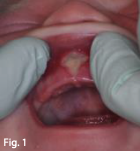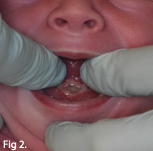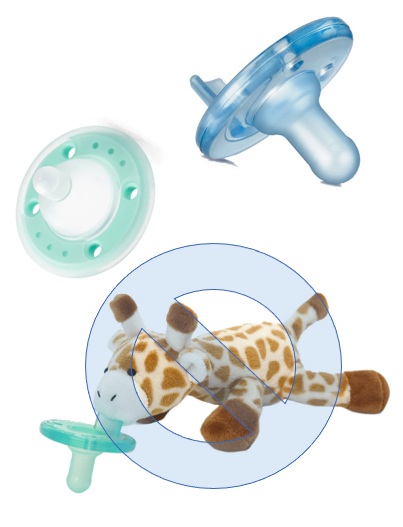Location
9735 Landmark Parkway Dr.
Suite #16 St. Louis, MO 63127
Call Us
(314) 270-5817
9735 Landmark Parkway Dr.
Suite #16 St. Louis, MO 63127
(314) 270-5817
IMPORTANT: This packet includes information that will help you and your little one recover as best as possible. Please understand that sucking correctly and consistently after the procedure takes time. Improvements with feedings are usually gradual and may take anywhere from 2-4 weeks.
***Please be aware that the healing timeline below may not apply to every baby.***
Dose based on weight. Give every 4-6 hours for the first few days as needed for pain.
Homeopathic remedies used to treat pain and inflammation Instructions: Dissolve 5 pellets of each, plus 7 sprays Rescue Remedy in 1 ounce pure water.
Infant’s drops (50 mg/1.25 ml) or children’s concentration (100 mg/5 ml.)


Please take note of the “white diamond patches”. The released area will form a wet scab after the first day. It will appear white and soft because it is wet. This is nature’s “band aid”. It is not always white and in some cases it can be yellow, greenish, or grey. The diamond will usually peak in size by day 7 and shrink from days 7-21.
Make sure you are gently rubbing into this scab because the healing is occurring underneath it.
After one week, the white area will get smaller each day, but HEALING IS STILL HAPPENING! So even though the scab will heal, you must continue the stretching or the new frenum will not be as long as possible and the procedure may need to be repeated for optimal results.
Important: Suck training exercises are helpful for regaining proper tongue function. The exercises below are NOT intended to replace the in-person help of a lactation consultant or health care professional.
Use these exercises before feeding or as a playtime activity. Be sure to stop any exercise that your baby dislikes. It is not necessary to do every exercise; only sure those that are helpful for your baby. Before beginning, wash your hands and be sure nails are short and smooth. It is best to work directly with a lactation consultant to determine which exercises are best for your baby.

Use a finger that closely matches the size of your nipple. Place the backside of this finger against the baby’s chin with the tip of your finger touching the underside of the nose. This should stimulate the baby to gape widely. Allow the baby to draw in finger, pad side up, and suck. The tongue should cover the lower gumand your finger should be drawn into the juncture of the hard and soft palate. If the tongue is not forward over the lower gums, or if the back of the tongue bunches up, gently press down on the tongue (saying “down”) and use forward (towards the lips) traction.

Begin as in exercise 1, but turn finger over and press down on the back of the tongue and draw slowly out using downward and forward (toward lips) pressure on the tongue. Repeat a few times.

Gently stroke the baby’s lips until the mouth opens, and then stroke the lower and upper gums side to side. The tongue should follow your finger.

Touch the baby’s chin, nose and upper lip. When the baby opens wide, gently massage the tip of the tongue in circular motions pressing down and out, encouraging the tongue to move over the lower gums. Massage can continue back further on the tongue with light pressure as the finger moves back on the tongue and firmer pressure when the finger moves forward. Avoid gagging baby.

If a baby has a high or narrow palate and gags on the nipple or insists on a shallow latch, it may help to desensitize the palate. Begin by massaging the baby’s palate near the gum-line. Progressively massage deeper, but avoid gagging the baby. Repeat exercise until the baby will allow a finger to touch his palate while sucking on a finger. It may take several days of short exercise sessions to be effective.
If your baby does not open wide, a gentle massage may help relax the jaw and facial muscles. A skilled body worker such as a chiropractor, osteopath, or craniosacral therapist who specializes in infant care may also help your baby. Begin with a light fingertip circular motion under the baby’s jaw from back to front on both sides. Using fingertips, massage baby’s cheeks from the center toward the temple on both sides. Massage in tiny circles around the mouth, near the lips, clockwise and counterclockwise. Massage around the baby’s mouth near the lips from center outward, on both sides of the mouth, top and bottom. Gently tap a finger over baby’s lips and massage baby’s chin.
PACIFIERS
If your child will use a pacifier, we recommend the following, as they are best for oral development:
• Avent soothie (typically given at birth in the hospital)
• Ninni Co.
AVOID wubbanub pacifiers as they put added pressure on the front teeth area and constrict the palate.


BOTTLES
Bottle feeding may resume immediately after a frenectomy procedure as it gets the new mouth muscles working immediately.
If choosing to bottle feed your child, we recommend the following, as they are best for oral development:
• Dr. Brown’s Narrow
• Even-flo Balance
Body work is the general term used to describe therapies that may help relieve and normalize structural issues in the body. Some babies may need more body work than others. Babies who receive some form of bodywork seem to heal and rehabilitate better. Some types of therapies are listed below:
This is a simple at-home therapy you can perform a few times a day for 5-20 minutes. This may help your infant gain strength in the neck muscles that support proper sucking.
Craniosacral Therapy (CST) is a gentle hands-on approach that releases tensions deep in the body to relieve pain and dysfunction. It also improves whole-body health and performance. CST is usually performed by a chiropractor or osteopath.
Myofascial release therapy is a safe and very effective hands-on technique that involves applying gentle sustained pressure into the myofascial connective tissue restrictions to eliminate pain and restore motion. It is usually performed by a physical or massage therapist.
Oral Motor and Sensory Therapy are different than bodywork and takes a comprehensive approach to assess sucking, swallowing, and general feeding issues. We can provide you a referral to a highly skilled therapist. The following types of providers may help:
Making exercises fun and exciting, rather than a “job” can aid in their cooperation. Below are a few fun exercises they can do with food and a few other handy items:
Sticky Lick
Put a dollop of peanut button, Nutella, honey, or something sticky at the bottom of a shot glass or a medicine cup. Ask your child to use their tongue to reach into the cup and lick out the sticky stuff from the bottom. Challenge them to clear the cup completely. This will work their tongue muscles to the max!
Cheerio Balance
Place a cheerio n the tip of your child’s tongue. Challenge them to place their tongue, while balancing the cheerio, into “the spot” on the roof of their mouth and see how long they can hold it there. Work your way up to longer and longer stretches of time.
Popsicles // Xylitol Lollipops
Give your child a special treat like a popsicle or a tooth friendly lollipop (Xylitol – Dr Johns or Zollilolli) and challenge them to lick it without putting the whole thing in their mouth…using only their tongue.
Here is a list of a few other items available to assist with exercising/stretching:
Myo-spots (a little tablet that sticks to “the spot” in the roof of the mouth and entices the tongue to lift up.
Bite Block/Mouth Rest (to assist in stretching without your child closing down on your fingers if molars are present)
Youtube Video of Exercises: https://www.youtube.com/watch?v=ouuIOo5F0aQ
(Search: Myofunctional Therapy Exercises with Dr. Audrey Yoon #3: After Frenuloplasty/Frenectomy Surgery)
Dr. Kelly Jobe & her staff are passionate about providing the best pediatric dental care in St. Louis, MO!
© Copyright Kids Smiles Pediatric Dentistry. All rights reserved. Privacy Policy.